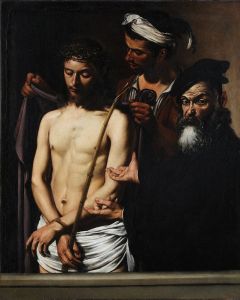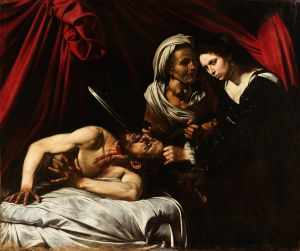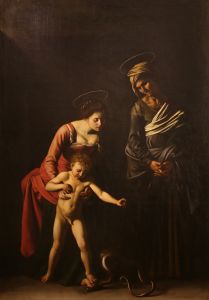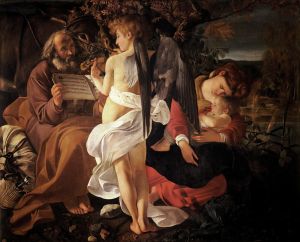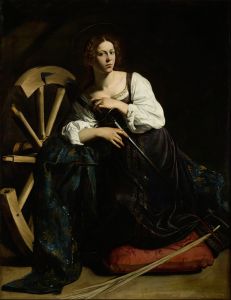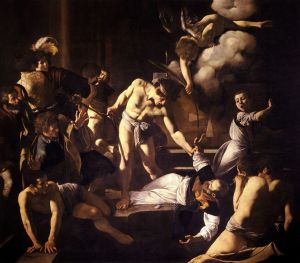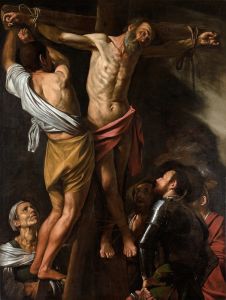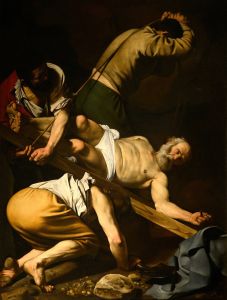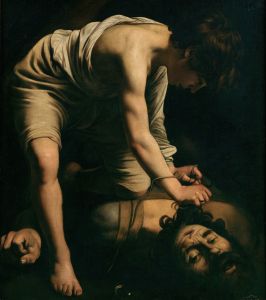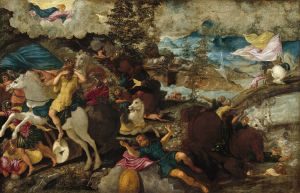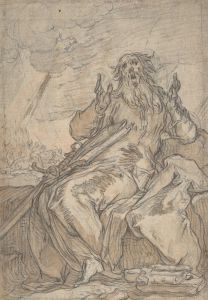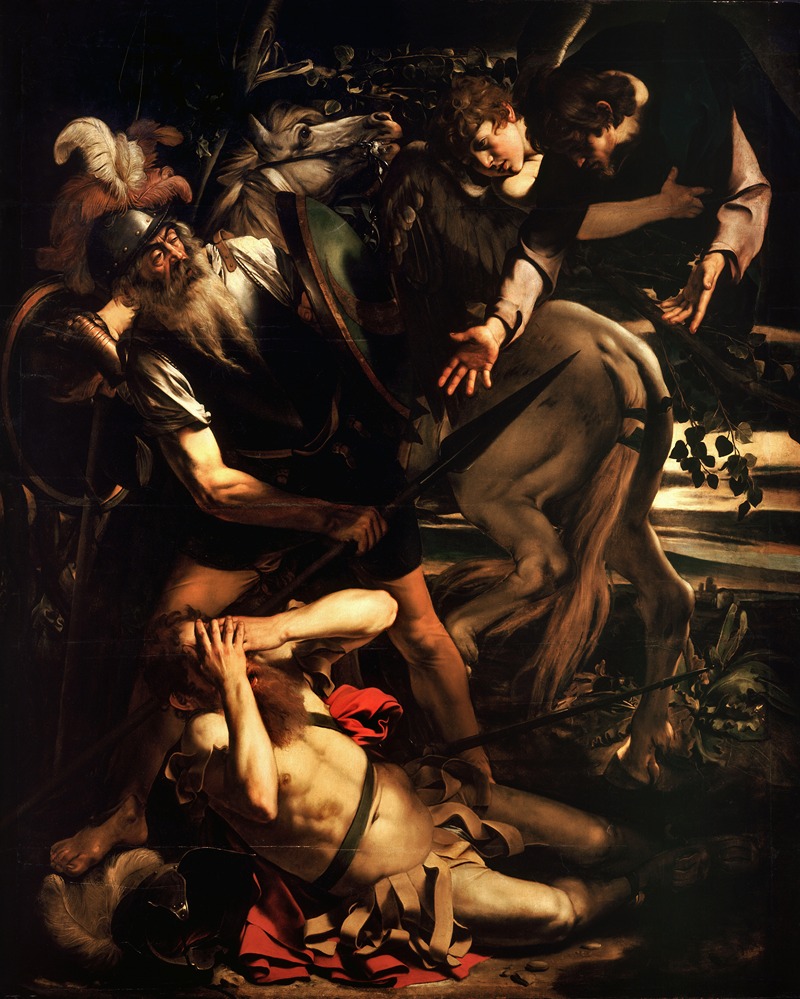
The Conversion of Saint Paul
A hand-painted replica of Caravaggio’s masterpiece The Conversion of Saint Paul, meticulously crafted by professional artists to capture the true essence of the original. Each piece is created with museum-quality canvas and rare mineral pigments, carefully painted by experienced artists with delicate brushstrokes and rich, layered colors to perfectly recreate the texture of the original artwork. Unlike machine-printed reproductions, this hand-painted version brings the painting to life, infused with the artist’s emotions and skill in every stroke. Whether for personal collection or home decoration, it instantly elevates the artistic atmosphere of any space.
"The Conversion of Saint Paul" is a renowned painting by the Italian Baroque master Michelangelo Merisi da Caravaggio. This artwork, completed around 1600-1601, is one of two paintings by Caravaggio depicting the moment of Saint Paul's conversion to Christianity. The painting is housed in the Cerasi Chapel of the church of Santa Maria del Popolo in Rome, Italy.
Caravaggio's "The Conversion of Saint Paul" captures the dramatic moment described in the Acts of the Apostles (9:3-9), where Saul of Tarsus, a fervent persecutor of Christians, experiences a profound spiritual transformation. According to the biblical account, Saul is struck by a blinding light from heaven while on the road to Damascus, hears the voice of Jesus Christ, and subsequently converts to Christianity, taking the name Paul.
In this painting, Caravaggio employs his signature chiaroscuro technique, using stark contrasts between light and dark to heighten the emotional intensity of the scene. The composition is tightly focused, with the central figures dominating the canvas. Saul, depicted as a young man, is shown lying on the ground, arms outstretched, in a moment of divine revelation. His eyes are closed, and his face reflects a mixture of awe and confusion. The light that symbolizes the divine presence illuminates his figure, creating a dramatic focal point.
A key element of Caravaggio's interpretation is the inclusion of a horse, which stands over Saul. The horse, depicted in a naturalistic manner, adds to the sense of immediacy and realism. The animal's calm demeanor contrasts with Saul's intense experience, emphasizing the miraculous nature of the event. A groom, who is leading the horse, appears unaware of the supernatural occurrence, further highlighting Saul's personal and transformative encounter with the divine.
Caravaggio's use of everyday realism and his focus on the human experience of the divine were revolutionary at the time and contributed to the development of Baroque art. His ability to convey deep spiritual and emotional truths through naturalistic detail and dramatic lighting has made "The Conversion of Saint Paul" a masterpiece of religious art.
The painting's historical context is also significant. It was commissioned by Monsignor Tiberio Cerasi, Treasurer-General to Pope Clement VIII, for his family chapel. Caravaggio's work was part of a larger decorative scheme that included another painting by him, "The Crucifixion of Saint Peter," and an altarpiece by Annibale Carracci. The juxtaposition of Caravaggio's dynamic, emotionally charged style with Carracci's more classical approach provides a fascinating insight into the artistic currents of the time.
"The Conversion of Saint Paul" remains a powerful example of Caravaggio's ability to blend naturalism with dramatic intensity, creating works that continue to resonate with viewers centuries after they were painted. The painting not only captures a pivotal moment in Christian history but also exemplifies Caravaggio's innovative approach to religious art, making it a significant piece in the study of Baroque painting.







